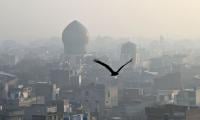Rawalpindi: City authorities are not aware of the need to invest in the vast network of sewage and water system that exists beneath our feet in Rawalpindi city.
“The challenges faced by policymakers across the city reveal the physical and financial realities created by an increasingly antiquated water and sewage system that dates back as much as the existence of the city,” says Zaigham Zaidi. “The core difficulty is that the network of pipes and sewers that keep water flowing in and out of homes daily doesn’t have the strength of more visible forms of infrastructure such as roads,” says Shabbir Naqvi.
“If a chunk is missing out of a bridge, you’re going to notice that. In addition, if you have a chunk missing from a sewer, you are not going to notice that immediately. It is the kind of work, the concerned departments do not think about it as there is no support for funding the constant maintenance,” says Mushtaq Hussain.
“Maintenance increasingly means replacement both for water and sewer systems. According to media reports, about one percent of water mains need replacement annually to avoid an increase in failures,” says Akbar Ali. “The consequences of the failure to act are already becoming evident. I noted a sinkhole from the collapse last year of an area sewer that opened up a 25-foot-long, 14-foot-deep trench. Water main breaks alone have increased manifold,” says Arif Alvi.
“The city loses countless gallons of drinking water a day through leaking pipes. Gallons of untreated wastewater goes into surface water systems, sometimes due to capacity issues,” says Hasan Akhtar. “Most of the infrastructure is out-of-sight, out-of-mind until something disastrous happens. The concerned departments must have knowledge of the infrastructure financed by our grandparents. I am trying to point out that it’s in poor condition and we need to start making investments to bring it up to the standards where it was decades ago,” says Matloob Ali.
“The improvements are part of an effort to reduce overflows that occur during heavy rains when stormwater combines with the nasty flow. When you look at what else needs to happen for proper asset management in terms of needing to replace a certain amount of pipe every year just because it wears out, we will be spending a lot. Though there is also a cost to not making the investment now,” says Razi Haider.
“We have got factories dependent on sewers to carry away waste. That is an economic impact too. If they cannot easily get water to supply their businesses, they are not going to produce jobs,” adds Razi. City leaders admit, “We’ve got to get about the business of investing and replacing them, but it is quite expensive. We have a very large system to maintain it amid the increased population.”
This image shows a Rawalpindi Police official interacting with his juniors on November 30, 2023. —...
View of a China-Pakistan B2B Conference focusing on animal feed, fruit and vegetable processing industries hosted by...
Participants pose for a group photo at the First cohort of training in Islamabad on November 27, 2024. —...
CDA workers are cleaning an area following the PTI protest in Islamabad on November 27, 2024. — APPIslamabad :...
Muslim pilgrims circle the Kaaba as they pray at the Grand Mosque, during the annual haj pilgrimage in the holy city...
This representational image shows buses and other public transport vehicles filled with passengers. —...







